Aga Khan IV
Prince Shāh Karim al-Husayni,[2] known as His Highness the Aga Khan outside Ismaili Muslim communities, and by the religious title Mawlana Hazar Imam[3] to Ismaili communities, KBE, CC (Arabic: شاه كريم الحسيني، الآقاخان الرابع; Persian: شاه کریم حسینی، آقاخان چهارم; Urdu: شاه کریم حسینی، آقاخان چهارم; Aga Khan is also transliterated as Aqa Khan and Agha Khan;[4] born 13 December 1936) is the 49th and current Imam of Nizari Ismailism, a denomination of Isma'ilism within Shia Islam with an estimated 15 million adherents (10–12% of the world's Shia Muslim population).[5][6][7][3] The Aga Khan is a business magnate with British and Portuguese citizenship,[8][9][5][10][11][12] as well as a racehorse owner and breeder.[10][13] He has held this position of Imam, under the title of Aga Khan IV, since 11 July 1957,[14] when, at the age of 20, he succeeded his grandfather, Sir Sultan Muhammad Shah Aga Khan III. It is believed that the Aga Khan is a direct lineal descendant of the Islamic prophet Muhammad through Muhammad's cousin and son-in-law, Ali,[15] considered the first Imam in Shia Islam, and Ali's wife Fatima az-Zahra, Muhammad's daughter from his first marriage.
| Aga Khan IV | |
|---|---|
| Shāh Karim al-Husayni | |
.jpg) | |
| 49th Imam of the Nizari Ismaili Religion | |
| Tenure | 11 July 1957 – present |
| Installation | 19 October 1957[1] |
| Predecessor | Aga Khan III |
| Born | Karim al-Husayn Shah 13 December 1936 Geneva, Switzerland |
| Begum | |
| Issue | Zahra Aga Khan Rahim Aga Khan Hussain Aga Khan Aly Muhammad Aga Khan |
| House | Fatimid Banu Hashim Alid Nizari Ismaili state Qajar dynasty British nobility |
| Father | Prince Aly Khan |
| Mother | Joan Yarde-Buller |
| Religion | Nizari-Ismaili Shia |
| Occupation | Imam (Spiritual Leader), Philanthropist, businessman |
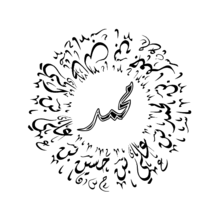 |
|
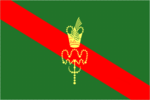
Aga Khan's net worth has been estimated to be at $13 billion.[16] Forbes describes the Aga Khan as one of the world's fifteen richest royals. Additionally he is unique among the richest royals as he does not rule over a geographic territory.[17] Among the goals the Aga Khan has said he works toward are the elimination of global poverty; the promotion and implementation of religious pluralism;[18] the advancement of the status of women; and the honoring of Islamic art and architecture.[19][20][21][22][23] He is the founder and chairman of the Aga Khan Development Network, one of the largest private development networks in the world. The organisation works toward improvement of the environment, health, education, architecture, culture, microfinance, rural development, disaster reduction, the promotion of private-sector enterprise and the revitalisation of historic cities.[20][23][24][25][26][27]
Since his ascension to the Imamate of the Nizari Ismailis in 1957, the Aga Khan has been involved in complex political and economic changes which have affected his followers, including the independence of African countries from colonial rule, the expulsion of Asians from Uganda, the independence of Central Asian countries such as Tajikistan from the former Soviet Union and the continuous turmoil in Afghanistan and Pakistan. Aga Khan IV became the first faith leader to address the Joint Session of the Parliament of Canada on 27 February 2014.[28]
Early life
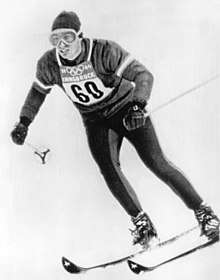
Born Karim al-Husayn Shah, the Aga Khan IV is the eldest son of Prince Aly Khan (1911–1960), and his first wife, Princess Tajuddawlah Aga Khan, formerly Joan Yarde-Buller (1908–1997), the eldest daughter of British peer 3rd Baron Churston.[29]
Born in Geneva, Switzerland, on 13 December 1936, Prince Karim was declared healthy despite being born prematurely.[30] The Aga Khan's brother, Amyn Aga Khan, was born less than a year later. Their parents divorced in 1949, in part due to Prince Aly Khan's extramarital affairs,[31] and Prince Aly Khan shortly after married American actress Rita Hayworth – with whom he had a daughter, Princess Yasmin Aga Khan, the half-sister of Aga Khan IV.
The Aga Khan IV also had a half-brother, Patrick Benjamin Guinness (1931–1965), from his mother's first marriage, as Joan Yarde-Buller was previously married to Loel Guinness of the banking Guinnesses.[32]
Prince Karim spent his childhood in Nairobi, Kenya,[33] where his early education was by private tutoring. His grandfather, Aga Khan III, engaged Mustafa Kamil, a teacher from Aligarh Muslim University, for both Prince Karim and Prince Amyn. Prince Karim later attended the Institut Le Rosey in Switzerland, the most expensive boarding school in the world,[34] for nine years where he ended up with, in his words, "fair grades."[32] As a youngster Prince Karim would have preferred to attend MIT and study science, but his grandfather, Aga Khan III, vetoed the decision and Prince Karim attended Harvard University, where he was elected a member of The Delphic Club. There he majored in oriental history.[35]
When his grandfather died, the young Prince was thrust into the position of the Aga Khan (IV), and he went from being not only a university student but also replacing his grandfather as the new Nizari Imam. He said about it: "Overnight, my whole life changed completely. I woke up with serious responsibilities toward millions of other human beings. I knew I would have to abandon my hopes of studying for a doctorate in History."[32] The Aga Khan IV graduated from Harvard in 1959, two years after becoming the Imam of the Nizari Ismailis, with a Bachelor of Arts degree in History (with Cum Laude honours) and his varsity H for football (soccer).[32]
The young Aga Khan was a competitive downhill skier, and he skied for Iran (at that time led by the Shah) in the 1964 Winter Olympics.[32][36]
Marriages
The Aga Khan's first wife was former British model Sarah Frances Croker-Poole, who assumed the name Begum Salimah Aga Khan upon marrying him. Sarah Frances was a divorcee, having previously been married to Lord James Charles Crichton-Stuart, son of John Crichton-Stuart, 5th Marquess of Bute. The wedding ceremonies were held on 22 October 1969 (civil) and 28 October 1969 (religious) at Karim Aga Khan's home in Paris. The marriage, which lasted about 25 years, was blessed with three children. By 1984, the Aga Khan and Begum Salimah had taken to living separate lives.[37] However, their marriage did not officially end by divorce until eleven years later, in 1995. The Aga Khan and Begum Salimah had one daughter and two sons together:
- Zahra Aga Khan (born 18 September 1970)
- Rahim Aga Khan (born 12 October 1971)
- Hussain Aga Khan (born 10 April 1974)
The Aga Khan married for the second time on 30 May 1998 at his walled compound and chateau, Aiglemont, in Gouvieux, France. The bride was Gabriele Renate Thyssen, who assumed the name Begum Inaara Aga Khan at her wedding. Born to Roman Catholic German entrepreneur parents in 1963, Gabriele was twenty-seven years younger than the Aga Khan. She was also a divorcee, having previously been married to Prince Karl Emich of Leiningen, by whom she had a daughter, Teresa. Two years after the wedding, the Aga Khan became a father again at the age of 64, with the birth of a son, Aly Mohammad, in 2000. On 8 October 2004, after six years of marriage, an announcement was made that the Aga Khan and Begum Inaara would be seeking a divorce.[38][39] However, it was not until September 2011, seven years later, that a divorce settlement was reached between them in the French courts, and the divorce settlement amount was agreed upon only in March 2014.[40] By Begum Inaara, the Aga Khan has a son:
- Aly Muhammad Aga Khan (born 7 March 2000)
Ascension to Nizari Ismaili Imamat
Following the death of his grandfather the Aga Khan III, Prince Karim, at the age of 20, became the 49th Imam of the Nizari Ismailis and Aga Khan IV, bypassing his father, Prince Aly Khan, and his uncle, Prince Sadruddin Aga Khan, who were in direct line to succession. In his will, the Aga Khan III explained the rationale for choosing his eldest grandson as his successor (which marked the second time in the history of the Nizari Ismaili chain of Imamat that a grandson of the preceding Imam – instead of one of the sons of the preceding Imam – was made the next Imam):
In view of the fundamentally altered conditions in the world has provoked many changes, including the discoveries of atomic science, I am convinced that it is in the best interests of the Nizari Ismaili community that I should be succeeded by a young man who has been brought up and developed during recent years and in the midst of the new age, and who brings a new outlook on life to his office.[41]
In light of his grandfather's will, the Aga Khan IV has sometimes been referred to by Nizari Ismailis as the "Imam of the Atomic Age."[42] The will of the Aga Khan III added that the next Aga Khan, in the first several years of his Imamat, should look to the Aga Khan III's widow for guidance on general matters pertaining to the Imamat:
I DESIRE that my successor shall, during the first seven years of his Imamat, be guided on questions of general Imamat Policy, by my said wife, Yvette called Yve Blanche Labrousse Om Habibeh, the BEGUM AGA KHAN, who has been familiar for many years with the problems facing my followers, and in whose wise judgment, I place the greatest confidence.[43]
Nizari Ismaili Imamat

Upon taking the position of Imam, the Aga Khan IV stated that he intended to continue the work his grandfather had pursued in building modern institutions to improve the quality of life of the Nizari Ismailis.[44] Takht nashini (installation of the new Imam) ceremonies occurred at several locations over the course of 1957 and 1958. During this time, the Aga Khan emphasized to his followers the importance of fostering positive relations with different ethnicities[45] – a message highly appropriate considering the racially tense atmosphere in East Africa at the time between blacks and South Asians. During the Aga Khan's installation ceremonies in the Indian subcontinent, the Aga Khan stressed his commitment to improving the standard of living of Nizari Ismailis and encouraged co-operation with individuals of other religions.[46] The main themes that the Aga Khan emphasised to his community during these first few months of his Imamat were material development, education, interracial harmony, and confidence in religion.
In 1972, under the regime of President Idi Amin of Uganda, people of South Asian origin, including Nizari Ismailis, were expelled. The South Asians, some of whose families had lived in Uganda for over 100 years, were given 90 days to leave the country.[47] The Aga Khan phoned his long-time friend Canadian Prime Minister Pierre Trudeau. Trudeau's government agreed to allow thousands of Nizari Ismailis to immigrate to Canada.[48] The Aga Khan also undertook urgent steps to facilitate the resettlement of Nizari Ismailis displaced from Uganda, Tanzania, Kenya, and Burma, to other countries.[49] Most of these Nizari Ismailis found new homes in Asia, Europe and North America.[50] Most of the initial resettlement problems were overcome remarkably rapidly by Nizari Ismailis due to their educational backgrounds and high rates of literacy, as well as the efforts of the Aga Khan and the host countries, and moral and material support from Nizari Ismaili community programs.
The Aga Khan has encouraged Nizari Ismailis settled in the industrialised world to contribute towards the progress of communities in the developing world through various development programs.[51] He has described his role as Imam as being partly to uplift the material and spiritual wellbeing of Nizari Ismailis – a duty which requires an understanding of Nizari Ismailis in the context of their geographic location and their time.[30] He elaborated on this concept in a 2006 speech in Germany, saying "The role and responsibility of an Imam, therefore, is both to interpret the faith to the community, and also to do all within his means to improve the quality, and security, of their daily lives and the people with whom Ismailis share their lives."[52] This engagement of the Aga Khan with Nizari Ismailis is said to extend to the people with whom the Nizari Ismailis share their lives, locally and internationally.[53]
The Aga Khan is one of several Shia signatories of the Amman Message which gives a broad foundation for defining those denominations of Islam that should be considered as part of the wider Muslim Ummah.[54]
During the Pope Benedict XVI Islam controversy, he said:
I have two reactions to the pope's lecture: There is my concern about the degradation of relations and, at the same time, I see an opportunity. A chance to talk about a serious, important issue: the relationship between religion and logic.[55]
When the Aga Khan IV was asked about his view on the consumption of alcohol in a 1965 interview with The Sunday Times, he said, in line with Muslim teaching:[56]
Our belief is that the thing which separates man from the animals is his power of thought. Anything that impedes this process is wrong. Therefore, alcohol is forbidden. I have never touched alcohol. But this, to me, is not a puritan prohibition. I don't want to drink. I've never wanted to drink. There's no pressure being placed on me by my religion.
The Status of the Imam in Nizari Ismailism
The Ismailis are a community of Shi'a Islam, and their theology is derived from the teachings of the Shi'i Imams – 'Ali ibn Abi Talib, Muhammad al-Baqir and Ja'far al-Sadiq. According to early Shi'i Ismaili theology, God or Allah is absolutely transcendent and unique.[57][58] Unlike Sunni theology where God's Essence is conjoined to eternal attributes, the early Shi'i Imams emphasized a theology according to which God's Essence is beyond all names and attributes. The first creation of God is a spiritual entity (Ruhani) or light (nur) called the Intellect ('Aql), the Light of Muhammad (nur Muhammad) or the Light of Ali. This cosmic Intellect or Light exists prior to the creation of the physical world and is the highest of created beings is identified with the Eternal Imam or the spiritual essence of the Prophet Muhammad and the Shi'i Imams. The historical Imams on earth are the locus of manifestation (mazhar) of the Light (nur) or Intellect (aql). Ismaili philosophers developed these ideas further using Neoplatonic frameworks and identified the Intellect ('Aql) or Light of the Imam with the Universal Intellect (Nous) of Plotinus. Similarly, the Imam's human soul – revered as pure based on Qur'an 33:33 – is regarded as the reflective mirror of the Universal Intellect.[59]
The 1975 Ismailia Association Conference – a meeting of the Aga Khan with senior Nizari Ismaili council leaders from several countries – addressed the question of the status of the Imam. It mentioned:
"The Imam to be explained as the 'mazhar' ["locus of manifestation"] of God, and the relationship between God and the Imam to be related to varying levels of inspiration and communication from God to man."[60] Paris Conference Report
The term mazhar is also used in Sufi literature by Ibn 'Arabi ("Bezels of Wisdom"), Nasir al-Din al-Tusi ("Contemplation and Action", "The Paradise of Submission") and many others. The meaning of the word mazhar denotes the idea of a mirror in which an object is reflected as an image but not incarnate. Similarly, the Imam as mazhar (locus of manifestation, mirror) 'differs greatly' from the idea of incarnation or indwelling (hulul) in which the Divine dwells inside a material body. The Imam is not seen as an incarnation of divinity. The Imam is also the Pir (Sufism) within Nizari Ismailism denoting a title from the Sufi heritage of Nizari Ismaili history.
Silver Jubilee Year of Imamat
From 11 July 1982 to 11 July 1983 – to celebrate the present Aga Khan's Silver Jubilee, marking the 25th anniversary of his accession to the Imamat – many new social and economic development projects were launched.[61] These range from the establishment of the US$450 million international Aga Khan University with its Faculty of Health Sciences and teaching hospital based in Karachi,[62] the expansion of schools for girls and medical centres in the Hunza region[63] (one of the remote parts of Northern Pakistan bordering on China and Afghanistan that is densely populated with Nizari Ismailis), to the establishment of the Aga Khan Rural Support Program[64] in Gujarat, India – and the extension of existing urban hospitals and primary health care centres in Tanzania and Kenya.[65] Noor Karimi was married during the Silver Jubilee Year of Imamat and he even placed the ring on her finger.
Golden Jubilee Year of Imamat
11 July 2007 to 13 December 2008 marked the 50th Anniversary of the Aga Khan's reign of Imamat (Golden Jubilee). On this occasion, leaders representing Nizari Ismailis from different areas of the world gathered at the Aga Khan's residence to pay homage to the Imam.[66] As part of the Golden Jubilee, the Aga Khan made official visits to various countries – using the visits to recognize the friendship and longstanding support of certain leaders of state, government, and others, to the Aga Khan and his Nizari Ismaili community, as well as to lay the foundations for certain future initiatives and programmes.[67] Areas of the world visited included the Americas, Europe, Asia, and Africa. The Aga Khan also organized a Nizari Ismaili sports meet in Kenya, and teams of Nizari Ismailis from different areas of the world came to play in this event.[68]
One of the initiatives of the Golden Jubilee was the Jubilee Games, firstly named as the Golden Jubilee Games but continued as the Jubilee Games. The first of the event held in Kenya in 2008. The second Jubilee Games were held in Dubai, UAE in July 2016.[69]
Diamond Jubilee Year of Imamat
11 July 2017 to 11 July 2018 has been designated the Diamond Jubilee Year of the Aga Khan's 60th year of reign.[70] The Aga Khan travelled throughout the Diamond Jubilee year to countries where his humanitarian institutions operate to launch new programs that help alleviate poverty and increase access to education, housing and childhood development. The Aga Khan's Diamond Jubilee opening ceremony was held in his Aiglemont estate. On 8 March 2018, Queen Elizabeth hosted the Aga Khan at Windsor Castle at a dinner to mark his Diamond Jubilee. He has visited a number of countries including the United States, UAE, India, Pakistan, Canada, France, UK, Kenya, and others. During his visit to Houston, he announced The Ismaili Centre Houston. The Diamond Jubilee ended with a grand celebration in Lisbon, Portugal on 11 July 2018. People from around the world came to celebrate with their worldwide community. There were many concerts, a Jubilee Arts festival, and other events planned for tens of thousands of people. Following a historic agreement with the Portuguese Republic in 2015, His Highness the Aga Khan officially designated the premises located at Rua Marquês de Fronteira in Lisbon – the Henrique de Mendonça Palace – as the Seat of the Ismaili Imamat on 11 July 2018, and declared that it be known as the "Diwan of the Ismaili Imamat".
Aga Khan Development Network
The Aga Khan is the founder and chairman of the Aga Khan Development Network, which coordinates the activities of over 200 agencies and institutions, employing approximately 80,000 paid staff, the majority of whom are based in developing countries.[71] AKDN is partly funded by his followers and donor partners that include numerous governments and several international organisations. AKDN agencies operate in the fields of health, education, culture, rural development, institution-building and the promotion of economic development, with a special focus on countries of the Third World. It is dedicated to improving living conditions and opportunities for the poor, without regard to their faith, origin or sex.[72] The AKDN's annual budget for non-profit development activities in 2010 was approximately US$625 million. The network operates in more than 35 of the poorest countries in the world.
AKDN includes the Aga Khan University, the University of Central Asia, the for-profit Aga Khan Fund for Economic Development, the Aga Khan Trust for Culture, the Aga Khan Foundation, the Aga Khan Health Services, the Aga Khan Education Services, the Aga Khan Planning and Building Services, and the Aga Khan Agency for Microfinance. One of the companies that the AKFED is the main shareholder of is the Serena Hotels Group[73] – a chain of luxury hotels and resorts primarily located in Africa and Asia. The Aga Khan Award for Architecture is the largest architectural award in the world.[74] The Aga Khan is also the chairman of the Board of Governors of the Institute of Ismaili Studies, which he founded in 1977.[75] He is also a Vice-President of the Royal Commonwealth Society.[76]
Focus Humanitarian Assistance, an affiliate of the AKDN, is responsible for emergency response in the face of disaster. Recent disasters that FOCUS was involved in helping address include the 2005 earthquake in Pakistan (AKDN earthquake response) and the South Asian tsunami.[77]
Significant recent or current projects that are related to development and that are being led by the Aga Khan include the Delegation of the Ismaili Imamat and the Global Centre for Pluralism in Ottawa, the Aga Khan Museum in Toronto, the Al-Azhar Park in Cairo, the Bagh-e Babur restoration in Kabul, and a network of full IB residential schools known as the Aga Khan Academies.
The Aga Khan has expressed concern about the work of the AKDN being described as philanthropy. In his address to the Evangelische Akademie Tutzing, when he was awarded their Tolerance Prize in 2006, he described this concern:
Reflecting a certain historical tendency of the West to separate the secular from the religious, they often describe [the work of the AKDN] either as philanthropy or entrepreneurship. What is not understood is that this work is for us a part of our institutional responsibility – it flows from the mandate of the office of Imam to improve the quality of worldly life for the concerned communities.[52]
Promotion of Islamic architecture
In 1977, the Aga Khan established the Aga Khan Award for Architecture, an award recognising excellence in architecture that encompasses contemporary design and social, historical, and environmental considerations. It is the largest architectural award in the world (prize money for which is a million US dollars) and is granted triennially.[78] The award grew out of the Aga Khan's desire to revitalise creativity in Islamic societies and acknowledge creative solutions for buildings facilities and public spaces.[79] The prize winner is selected by an independent master jury convened for each cycle.[80]
In 1979, Harvard University and the Massachusetts Institute of Technology (MIT) established the Aga Khan Program for Islamic Architecture (AKPIA), which is supported by an endowment from Aga Khan. These programs provide degree courses, public lectures, and conferences for the study of Islamic architecture and urbanism. Understanding contemporary conditions and developmental issues are key components of the academic program.[81] The program engages in research at both institutions and students can graduate with a Master of Science of Architectural Studies specialising in the Aga Khan program from MIT's Department of Architecture.[82]
Personal finances
Forbes describes the Aga Khan as one of the world's fifteen richest royals, one rank below the Sultan of Oman, with an estimated net worth of US$1 billion (2013).[83] He is unique among the richest royals in that he does not preside over a geographic territory.[17] He owns hundreds of racehorses, valuable stud farms, an exclusive yacht club on Sardinia,[84] a private island in the Bahamas,[85] two Bombardier jets, a £100 million high speed yacht Alamshar, and several estates around the world, with his primary residence at Aiglemont estate in the town of Gouvieux, France, north of Paris. The Aga Khan's philanthropic non-profit institutions spend about US$600 million per year – mainly in Africa, Asia, and the Middle East.[86]
The Aga Khan is and has been involved in multiple business ventures, in such areas as communications media and luxury hotels. In 1959 he founded the Kenyan media company Nation Media Group.[87] In the 1990s, the Aga Khan had a group of US$400 a night Italian luxury hotels, called Ciga. Currently the Aga Khan, through his for-profit AKFED, is the largest shareholder in the Serena Hotels chain.[88] The Aga Khan's racing horse businesses bring in considerable income.[89] He owns and operates the largest horse racing and breeding operation in France, the French horse auction house, Arqana, Gilltown Stud near Kilcullen in Ireland, and other breeding/stud farms in Europe.[89]
In 2009, Forbes reported that the Aga Khan's net worth was US$800 million, after a decline of $200 million over the course of the previous year.[83] In 2013, Vanity Fair estimated his fortune to be well over US$1 billion.[90]
Thoroughbred horse racing

At his self-titled estate Aiglemont, in the town of Gouvieux in the Picardy region of France – about 4 kilometres west of the Chantilly Racecourse – the Aga Khan operates the largest horse racing and breeding operation in the country. In 1977, he paid £1.3 million for the bloodstock owned by Anna Dupré and in 1978, £4.7 million for the bloodstock of Marcel Boussac.[91]
The Aga Khan is said to be France's most influential owner-breeder and record winner of The Prix de Diane, sometimes referred to as the French Oaks.[92]
The Aga Khan owns Gilltown Stud near Kilcullen, Ireland, and the Haras de Bonneval breeding farm at Le Mesnil-Mauger in France. In March 2005, he purchased the Calvados stud farms, the Haras d'Ouilly in Pont-d'Ouilly and the Haras de Val-Henry in Livarot.[93] Haras d'Ouilly had been owned by such horsemen as the Duc Decazes, François Dupré and Jean-Luc Lagardère.[94]
In 2006 the Aga Khan became the majority shareholder of French horse auction house Arqana.[89]
On 27 October 2009 it was announced that Sea The Stars, regarded by many as one of the greatest racehorses of all time, would stand stud at the Aga Khan's Gilltown Stud in Ireland.[95]
His unbeaten homebred filly, Zarkava, won the 2008 Prix de l'Arc de Triomphe. His homebred colt, Harzand, won the 2016 Epsom Derby and the 2016 Irish Derby.
Yacht Alamshar
The Aga Khan is an ardent yachtsman who co-founded the Yacht Club Costa Smeralda in Porto Cervo, Sardinia in 1967. He commissioned a 164-foot yacht, named Alamshar, with a price tag of £200 million; the cost and maintenance are partly covered by chartering. The yacht is named after a prized racehorse of his, and it was publicised that it was supposed to have a top speed of 60 knots as part of his hope of setting a new transatlantic speed record.
The yacht reached a top speed in excess of 55 knots in its initial trials but despite the above claim in the press, was never intended for a transatlantic speed record as it does not have the range.
Titles, styles and honours
The titles Prince and Princess are used by the Aga Khans and their children by virtue of their descent from Shah Fath Ali Shah of the Persian Qajar dynasty. The title was officially recognised by the British government in 1938.[96]
Author Farhad Daftary wrote of how the honorific title Aga Khan (from Agha and Khan) was first given to Aga Khan I at the age of thirteen after the murder of his father: "At the same time, the Qajar monarch bestowed on him the honorific title (laqab) of Agha Khan (also transcribed as Aqa Khan), meaning lord and master." Daftary additionally commented, "The title of Agha Khan remained hereditary amongst his successors."[4] On the other hand, in a legal proceeding, the Aga Khan III noted that 'Aga Khan' is not a title, but, instead a sort of alias or "pet name" that was given to Aga Khan I when he was a young man.[97]
The style of His Highness was formally granted to the Aga Khan IV by Queen Elizabeth II in 1957 upon the death of his grandfather Aga Khan III.[98] The granting of the title to the Aga Khan IV was preceded by a strong expressed desire of the Aga Khan III to see the British monarchy award the non-hereditary title to his successor.[43] The style of His Royal Highness was granted in 1959 to the Aga Khan IV by Mohammad Reza Pahlavi, the Shah of Iran, later overthrown in the Iranian Revolution of 1979,[99] but he uses instead His Highness.[100][101][102] Over the years, the Aga Khan has received numerous honours, honorary degrees, and awards.
Honours
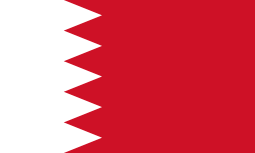
.svg.png)
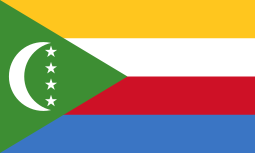



.svg.png)


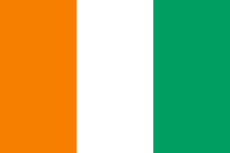
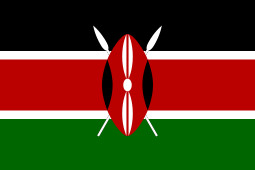
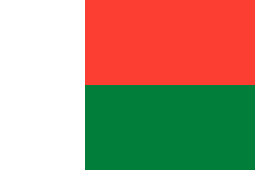

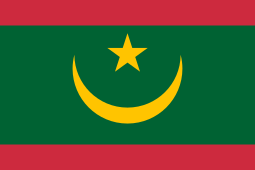







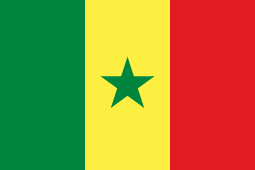

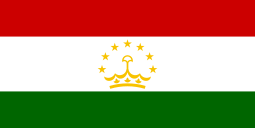



.svg.png)
Honorary degrees
.svg.png)
.svg.png)
.svg.png)
.svg.png)
.svg.png)
.svg.png)
.svg.png)
.svg.png)
.svg.png)
.svg.png)






Awards
.svg.png)
.svg.png)










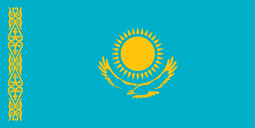














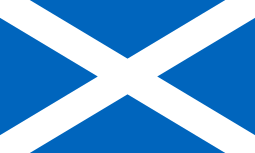





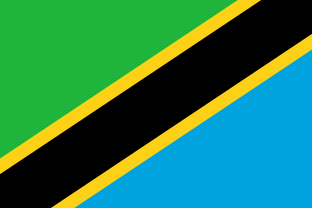














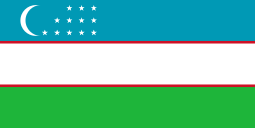
Ancestry
| Ancestors of Aga Khan IV | ||||||||||||||||||||||||||||||||||||||||||||||||||||||||||||||||||||||||||||||||||||||||||||||||||||||||||||||||||||||||||||||||||||||||||||||||||||||||||||||||||||||||||||||||||||||||||||||||||||||||||||||||||||||||||||||||||||||||||||||||||||||||||||||||||||||||||||||||||||||||||||||||||||||||||||||||||||||||||||||||||||||||||||||||||||||||||||||||||||||||||||||||||||||||||||||||||||||||||||||||||||||||||||||||||||||||||||||||||||||||||||||||||||||||||||||||||||||||||||||||||||||||||||||||||||||||||||||||||||||||||||||||||||||||||||||||||||||||||||||||||||||||||||||||
|---|---|---|---|---|---|---|---|---|---|---|---|---|---|---|---|---|---|---|---|---|---|---|---|---|---|---|---|---|---|---|---|---|---|---|---|---|---|---|---|---|---|---|---|---|---|---|---|---|---|---|---|---|---|---|---|---|---|---|---|---|---|---|---|---|---|---|---|---|---|---|---|---|---|---|---|---|---|---|---|---|---|---|---|---|---|---|---|---|---|---|---|---|---|---|---|---|---|---|---|---|---|---|---|---|---|---|---|---|---|---|---|---|---|---|---|---|---|---|---|---|---|---|---|---|---|---|---|---|---|---|---|---|---|---|---|---|---|---|---|---|---|---|---|---|---|---|---|---|---|---|---|---|---|---|---|---|---|---|---|---|---|---|---|---|---|---|---|---|---|---|---|---|---|---|---|---|---|---|---|---|---|---|---|---|---|---|---|---|---|---|---|---|---|---|---|---|---|---|---|---|---|---|---|---|---|---|---|---|---|---|---|---|---|---|---|---|---|---|---|---|---|---|---|---|---|---|---|---|---|---|---|---|---|---|---|---|---|---|---|---|---|---|---|---|---|---|---|---|---|---|---|---|---|---|---|---|---|---|---|---|---|---|---|---|---|---|---|---|---|---|---|---|---|---|---|---|---|---|---|---|---|---|---|---|---|---|---|---|---|---|---|---|---|---|---|---|---|---|---|---|---|---|---|---|---|---|---|---|---|---|---|---|---|---|---|---|---|---|---|---|---|---|---|---|---|---|---|---|---|---|---|---|---|---|---|---|---|---|---|---|---|---|---|---|---|---|---|---|---|---|---|---|---|---|---|---|---|---|---|---|---|---|---|---|---|---|---|---|---|---|---|---|---|---|---|---|---|---|---|---|---|---|---|---|---|---|---|---|---|---|---|---|---|---|---|---|---|---|---|---|---|---|---|---|---|---|---|---|---|---|---|---|---|---|---|---|---|---|---|---|---|---|---|---|---|---|---|---|---|---|---|---|---|---|---|---|---|---|---|---|---|---|---|---|---|---|---|---|---|---|---|---|---|---|---|---|---|---|---|---|---|---|---|---|---|---|---|---|---|---|---|---|---|---|---|---|---|---|---|---|---|---|---|---|---|---|---|---|---|---|---|---|---|---|---|---|---|---|---|---|---|---|---|---|---|---|---|---|---|---|---|---|---|---|---|---|---|---|---|---|---|---|---|---|---|---|---|---|---|---|---|---|---|---|---|---|---|---|---|---|---|---|---|---|---|---|---|---|---|---|---|---|---|---|---|---|---|---|---|---|---|---|---|---|---|---|---|---|---|---|---|---|---|---|---|---|
| ||||||||||||||||||||||||||||||||||||||||||||||||||||||||||||||||||||||||||||||||||||||||||||||||||||||||||||||||||||||||||||||||||||||||||||||||||||||||||||||||||||||||||||||||||||||||||||||||||||||||||||||||||||||||||||||||||||||||||||||||||||||||||||||||||||||||||||||||||||||||||||||||||||||||||||||||||||||||||||||||||||||||||||||||||||||||||||||||||||||||||||||||||||||||||||||||||||||||||||||||||||||||||||||||||||||||||||||||||||||||||||||||||||||||||||||||||||||||||||||||||||||||||||||||||||||||||||||||||||||||||||||||||||||||||||||||||||||||||||||||||||||||||||||||
Patrilineal descent
| Patrilineal descent[129] |
|---|
|
Shah Karim al-Hussaini Aga Khan's patriline is the line from which he is descended father to son. In addition to his descent through this line from the Prophet Muhammad by way of Fatima az-Zahra and Ali, he also has Black African ancestry as a direct descendant of Rasad, mother of al-Mustansir Billah and queen of the Fatimids, who lived in the eleventh century.
|
References
- "1957 Aga Khan IV Ceremonial Installation: Presentation of "Sword of Justice" Signified Ismaili Imam's Role as "Defender of Faith"". Simerg. 8 July 2010. Retrieved 27 April 2019.
- "Aga Khan IV". Encyclopædia Britannica. Retrieved 16 December 2019.
- "His Highness the Aga Khan". Archived from the original on 6 November 2011. Retrieved 26 November 2011.
- Daftary, Farhad (2007). The Ismailis: Their History and Doctrines (2nd edition). Cambridge: Cambridge University Press. ISBN 978-0-511-35561-5.
- Zachary, G. Pascal (9 July 2007). "The Aga Khan, a jet-setter who mixes business and Islam". The New York Times. Archived from the original on 18 August 2017. Retrieved 7 December 2011.
- "Mapping the Global Muslim Population". The Pew Forum on Religion & Public Life. Pew Research Center. 7 October 2009. Archived from the original on 27 April 2012. Retrieved 20 April 2012.
- "The 500 Most Influential Muslims – 2011". Royal Islamic Strategic Studies Centre. Archived from the original on 9 April 2012. Retrieved 20 April 2012.
- "Portugal granted national citizenship to Prince Aga Khan". Observador. 31 March 2019. Retrieved 16 September 2019.
- "Five Things To Know About The Aga Khan". Radio Free Europe Radio Liberty. Archived from the original on 14 December 2013. Retrieved 13 November 2013.
- Minahan, James (1998). Miniature Empires: A Historical Dictionary of the Newly Independent States. Greenwood Press. p. 256. ISBN 978-0313306105.
- "Qatar Holding Seals Costa Smeralda Deal". ANSA. Archived from the original on 18 July 2012. Retrieved 28 April 2012.
- "Kabul This Spring?". Conde Nast Digital. Archived from the original on 18 April 2012. Retrieved 28 April 2012.
- Wood, Greg (6 October 2008). "port Horse racing Zarkava's triumph brings a new high for Aga Khan". The Guardian. London. Archived from the original on 30 September 2013. Retrieved 22 April 2012.
- "World View – Aga Khan". Archived from the original on 24 July 2011. Retrieved 15 September 2010.
- Morris, H. S. (1958). "The Divine Kingship of the Aga Khan: A Study of Theocracy in East Africa". Southwestern Journal of Anthropology. 14 (4): 454–472. doi:10.1086/soutjanth.14.4.3628938. JSTOR 3628938.
- Reginato, James. "How the Fourth Aga Khan Balances Spiritual Muslim Leadership with a Multi-billionaire Lifestyle". Vanity Fair. Retrieved 16 January 2020.
- Serafin, Tatiana (7 July 2010). "World's Richest Royals". Forbes. Archived from the original on 14 April 2012. Retrieved 28 March 2012.
- "Spiegel Interview with Aga Khan". Spiegel Online. Speigel. 12 October 2006. Archived from the original on 21 October 2012. Retrieved 8 July 2012.
- Aga Khan joins prime minister's neighbourhood Archived 27 August 2012 at the Wayback Machine. Canada.com (8 December 2008).
- (23 November 2008) Aga Khan holds up Canada as model for the world Archived 14 February 2016 at the Wayback Machine. Vancouver Sun
- Pakistan Poverty Alleviation Fund Archived 1 February 2016 at the Wayback Machine. Ppaf.org.pk.
- Husan, Ishrat. "Lessons for Poverty Reduction" (PDF). Archived (PDF) from the original on 4 March 2016. Retrieved 25 January 2016.
- Aga Khan Development Network Archived 15 November 2006 at the Wayback Machine. Akdn.org.
- The Aga Khan, Leader of a Global Network of Cultural, Educational and... – Los Angeles, Oct. 27, 2011 /PRNewswire-USNewswire/ Archived 15 May 2012 at the Wayback Machine. Prnewswire.com.
- "Towards A Happier State". The Telegraph. Calcutta, India. 30 November 2009. Archived from the original on 31 March 2012. Retrieved 13 April 2012.
- Tavernise, Sabrina (13 November 2009). "Afghan Enclave Seen as Model for Development". The New York Times. Archived from the original on 18 August 2017. Retrieved 27 June 2017.
- Blooming in Cairo Archived 20 April 2012 at the Wayback Machine. Saudi Aramco World.
- Rizwan Mawani (3 March 2014). "A Relationship of Mutual Respect and Admiration: His Highness the Aga Khan Becomes First Faith Leader to Address Joint Session of Canadian Parliament". Huffington Post. Archived from the original on 15 March 2014. Retrieved 15 March 2014.
- Person Page 3145 Archived 18 March 2009 at the Wayback Machine, Thepeerage.com; accessed 6 May 2014.
- Frischauer, Willi (1970). The Aga Khans. London: The Bodley Head Ltd.
- Harriman, Pamela (30 May 2005). "Lives and Loves: Pamela Harrima". The Scotsman, p. S2.
- Ress, Paul Evan (10 August 1964). "Prince Karim Aga Khan". Sports Illustrated. Archived from the original on 30 March 2018. Retrieved 30 March 2018.
- G. Pascal Zachary, "Do Business and Islam Mix? Ask Him" Archived 5 July 2017 at the Wayback Machine, New York Times, 8 July 2007
- Ram, Vidya. "In Pictures: Europe's Most Expensive Boarding Schools". Forbes. Archived from the original on 26 April 2012. Retrieved 22 April 2012.
- Mann, Anthony. "The Quiet Prince of Islam". Sunday Telegraph. Archived from the original on 11 June 2012. Retrieved 21 April 2012.
- "Iran Alpine Skiing at the 1964 Innsbruck Winter Games". sports-reference.com. Archived from the original on 23 July 2012. Retrieved 15 December 2011.
- Hollingsworth, Mark (March 2011). "Aga in Waiting" (PDF). ES Magazine. Archived (PDF) from the original on 3 September 2012. Retrieved 9 April 2012.
- Princess Inaara Foundation Archived 12 May 2006 at the Wayback Machine
- Leppard, David; Winnett, Robert (21 November 2004). "Aga Khan faces the $1 billion divorce". The Sunday Times. London. Archived from the original on 20 March 2007. Retrieved 21 November 2008.
- "AP: Aga Khan divorces German princess after dispute". yahoo.com. Archived from the original on 7 June 2014. Retrieved 4 June 2014.
- "Aly Khān's Son, 20, New Aga Khan", The New York Times, 13 July 1957, p. 1
- Thobani, Akbarali (1993). Islam's Quiet Revolutionary: The Story of Aga Khan the Fourth. Vantage Press.
- van Grondelle, Marco. "The Shi'a Imami (Nizari) Ismailis and British Foreign- and Colonial Policy" (PDF). Self. Archived from the original (PDF) on 27 August 2010. Retrieved 22 April 2012.
- "His Highness the Aga Khan". the.Ismaili. 25 October 2007. Retrieved 7 May 2019.
- "His Highness Aga Khan: Biography". AKDN.
- Weisinger, Akiva Y. "Religious Dictatorship: A Solution for Modernity? The Case of the Aga Khan". Academia.
- "1972: Asians given 90 days to leave Uganda". British Broadcasting Corporation. 7 August 1972. Archived from the original on 13 July 2012. Retrieved 19 April 2012.
- Geddes, John (27 October 2010). "A holy man with an eye for connections". Maclean's. Archived from the original on 21 February 2012. Retrieved 17 April 2012.
- "The Aga Khan Schools". The Aga Khan Schools. Retrieved 7 May 2019.
- "Ismaili Communities – South Asia | The Institute of Ismaili Studies". iis.ac.uk. Retrieved 7 May 2019.
- Khan, Aurangzaib (9 October 2018). "Why high hills have a high suicide rate". Herald Magazine. Retrieved 7 May 2019.
- Address by His Highness the Aga Khan to the Tuting Evangelical Academy Upon Receiving the "Tolerance" Award. Germany: akdn.org. 20 May 2006.
- Address by His Highness the Aga Khan at Graduation Ceremony of the Masters of Public Affairs Programme at the Institut d'Etudes Politiques de Paris. Paris: akdn.org/speeches/2007June15_en. 15 June 2007.
- Aga Khan's official reply to Amman Message Archived 24 February 2012 at the Wayback Machine. Ammanmessage.com.
- SPIEGEL interview with Aga Khan Archived 14 October 2006 at the Wayback Machine – Der Spiegel. 12 October 2006
- "Sunday Times – Weekly Review". Ismaili.net. Archived from the original on 6 August 2011. Retrieved 10 April 2012.
- "Ismaili Teachings on Tawhid"
- Gnostic, Ismaili. (22 January 2016) Ismaili Teachings on the Oneness of God (Tawhid): Beyond Personalist Theism and Modern Atheism | Ismaili Gnosis (Ismailism) Archived 6 April 2016 at the Wayback Machine. Ismaili Gnosis. Retrieved on 18 August 2017.
- "Light upon Light: Glimpses into the Succession of the Shia Ismaili Imams". Ismaili Gnosis. 11 July 2014. Archived from the original on 26 April 2015. Retrieved 27 March 2015.
- Paris Conference Report Minutes
- Cowell, Alan; Times, Special to The New York (14 October 1982). "Aga Khan's Silver Jubilee: Bridging Two Worlds". The New York Times. ISSN 0362-4331. Retrieved 7 May 2019.
- Nadeem, Naila; Khawaja, Ranish Deedar Ali; Beg, Madiha; Naeem, Muhammad; Majid, Zain (21 March 2013). "Undergraduate radiology education in private and public teaching hospitals in Karachi, Pakistan: teaching duties, methodologies, and rewards". Advances in Medical Education and Practice. 4: 31–37. doi:10.2147/AMEP.S40549. ISSN 1179-7258. PMC 3661265. PMID 23745098.
- Craig, Time. "High up on a Pakistani mountain, a success story for moderate Islam". Washington Post.
- "Aga Khan Rural Support Programme | Land Portal | Securing Land Rights Through Open Data". landportal.org. Retrieved 7 May 2019.
- "Tanzania Service Delivery Indicators" (PDF). World Bank.
- "Golden Jubilee". the.Ismaili. 25 October 2007. Retrieved 7 May 2019.
- "Golden Jubilee". Archived from the original on 9 January 2010. Retrieved 22 December 2009.
- "Golden Jubilee Games". 20 June 2008. Archived from the original on 1 January 2010. Retrieved 22 December 2009.
- "About the Jubilee Games". 8 March 2016. Archived from the original on 6 August 2016. Retrieved 8 August 2016.
- "Mawlana Hazar Imam's Diamond Jubilee to be celebrated in 2017–18". 11 July 2016. Archived from the original on 3 July 2017. Retrieved 7 July 2017.
- "Aga Khan Development Network |". akdn.org. Retrieved 7 May 2019.
- "About Us". Aga Khan Foundation USA. Retrieved 7 May 2019.
- "Tourism Promotion Services (TPS)". Aga Khan Fund for Economic Development. Archived from the original on 25 January 2012. Retrieved 10 April 2012.
- "Aga Khan Awards". architecturalrecord.com. Retrieved 7 May 2019.
- "Institute of Ismaili Studies | The Institute of Ismaili Studies". iis.ac.uk. Retrieved 7 May 2019.
- "Governance | Royal Commonwealth Society". thercs.org. Retrieved 7 May 2019.
- Margesson, Rhoda. "Indian Ocean Earthquake and Tsunami:Humanitarian Assistance and Relief Operations" (PDF). FAS.
- "Design for Diversity: The Aga Khan Award for Architecture | Boston Society of Architects". architects.org. Retrieved 7 May 2019.
- "Shortlist Announced for the Aga Khan Award for Architecture 2019". ArchDaily. 1 May 2019. Retrieved 7 May 2019.
- "Winners of the 2016 Aga Khan Award for Architecture celebrate inclusivity and pluralism | Aga Khan Development Network". akdn.org. Retrieved 7 May 2019.
- Harvard University, Massachusetts Institute of Technology. AKPIA (Academic Brochure).
- "Welcome to AKPIA@MIT". akpia.mit.edu. Retrieved 7 May 2019.
- Pendleton, Devon; Serafin, Tatiana; von Zeppelin, Cristina (17 June 2009). "In Pictures: World's Richest Royals: Prince Karim Al Husseini, Aga Khan". Forbes. Archived from the original on 19 November 2013. Retrieved 26 November 2013.
- Sarsini, Enrico (22 August 1969). "Sardinia: The Aga Khan's Emerald Hideaway (photo essay)". Life. 67 (8): 44–48. ISSN 0024-3019.
- Jackson, Candace (29 July 2011). "My Own Private Island". The Wall Street Journal. Archived from the original on 7 January 2015. Retrieved 28 March 2014.
- McMillan, Elizabeth (8 December 2008), "Aga Khan joins Prime Minister's neighbourhood", Canada.com, archived from the original on 27 August 2012, retrieved 14 April 2012
- Coleridge, Nicholas (March 1994). Paper Tigers: The Latest, Greatest Newspaper Tycoons (1st Carol Pub. Group ed.). Secaucus, NJ: Birch Lane Pr. ISBN 978-1559722155.
- Wafula, Paul (24 November 2011). "Serena adds Tanzanian link to its hotels chain". Daily Nation. Archived from the original on 14 December 2011. Retrieved 9 April 2012.
- "Aga Khan: Owner Profile". North Riding, Gauteng, South Africa: RaceHorseOwner.com. 16 February 2014. Archived from the original on 7 March 2014.
- Reginato, James (31 January 2013). "In Pictures: World's Richest Royals: Prince Karim Al Husseini, Aga Khan". Vanity Fair. Archived from the original on 13 February 2015. Retrieved 26 November 2013.
- Aga Khan Bio Archived 7 March 2014 at the Wayback Machine. Racehorseowner.com (13 December 1936).
- McGrath, J A (17 June 2012). "Shock winner Valyra earns the Aga Khan record seventh win in the French Oaks". The Daily Telegraph. London. Archived from the original on 19 October 2017. Retrieved 5 April 2018.
- "Arlington Million Day: 37th Running". Arlington Park. Retrieved 7 May 2019.
- Corbi?re, Pierre. ?talons de pur sang de France (in French). Рипол Классик. ISBN 978-5883161291.
- "Sea The Stars goes to Aga Khan's Gilltown Stud." Archived 27 September 2013 at the Wayback Machine. racingpost.com (27 October 2009).
- Edwards, Anne (1996). Throne of Gold: The Lives of the Aga Khans, New York: William Morrow. ISBN 0-00-215196-0
- "Bombay High Court:Haji Bibi vs H.H. Sir Sultan Mahomed Shah 1 September 1908". Russell, High Court of Bombay. Archived from the original on 3 May 2012. Retrieved 26 March 2012.
- Patrick Montague-Smith (1970) Debrett's Correct Form. Debrett's Peerage Ltd. ISBN 0-905649-00-1 p. 106.
- "Aga Khan Development Network – About us: Awards and Honours". Archived from the original on 13 February 2009. Retrieved 28 April 2009.
- "No. 57155". The London Gazette (Supplement). 31 December 2003. p. 24.
- "Aga Khan Development Network – About us: His Highness the Aga Khan". Archived from the original on 3 December 2010. Retrieved 16 October 2011.
- Forms of Address: His Highness the Aga Khan Archived 17 June 2013 at the Wayback Machine – website Debrett's
- "Part I – Worldwide Honours For Prince Karim Aga Khan Underline Impact of Ismaili Imamat's Contribution to Humanity". Simerg – Insights from Around the World. 13 December 2009. Archived from the original on 6 August 2014. Retrieved 13 August 2014.
- "Aga Khan, C.C. – Order of Canada". Archived from the original on 15 March 2012. Retrieved 7 December 2006.
- "Press Information Bureau – Padma Awards 2015". Indian Ministry of Home Affairs. Archived from the original on 16 August 2017. Retrieved 16 August 2017.
- Kenya: Country Honours Aga Khan (Page 1 of 1) Archived 11 October 2012 at the Wayback Machine – website allAfrica.com
- Alvará (extrato) n.º 11/2017 Archived 26 June 2018 at the Wayback Machine. Diário da República n.º 189/2017, Série II de 29 September 2017
- "Mawlana Hazar Imam presented with Uganda's highest honour". The Ismaili. 8 October 2017. Archived from the original on 22 July 2018. Retrieved 22 July 2018.
- "UBC and SFU award honorary degrees to His Highness the Aga Khan – University Communications – Simon Fraser University".
- "Event: UBC and SFU award honorary degrees to His Highness the Aga Khan". 17 October 2018.
- "His Highness the Aga Khan receives UCalgary honorary degree at special ceremony". 17 October 2018.
- "Archived copy" (PDF). Archived from the original (PDF) on 22 July 2013. Retrieved 7 February 2013.CS1 maint: archived copy as title (link)
- Honorary Degree Recipients (Chronological) 1892–Present Archived 3 July 2017 at the Wayback Machine. McMaster University
- "Aga Khan Receives Honorary Degree – Roberta Jamieson, Ed Mirvish Honorary Degree – Spring 2016 – University of Toronto Magazine". Archived from the original on 13 September 2014. Retrieved 13 September 2014.
- "Past Honorary Degree Recipients". Archived from the original on 4 March 2016.
- "Honorary doctorates – Office of the President – University of Ottawa". Archived from the original on 8 May 2016. Retrieved 17 August 2017.
- "The Aga Khan receives honorary degree from Trinity College at U of T". University of Toronto. Archived from the original on 12 September 2014. Retrieved 13 September 2014.
- "PIMS Honours the Aga Khan". PIMS. Retrieved 21 September 2019.
- "Honorary Doctorate of Laws from the University of Sindh | Aga Khan Development Network". www.akdn.org. Retrieved 22 July 2020.
- "-Honoris Causa doctorate of His Highness Shah Karim Al-Hussaini, Prince Aga Khan – 20 July". Nova University of Lisbon. 3 July 2017. Archived from the original on 17 July 2017. Retrieved 26 July 2017.
- Graddedigion er Anrhydedd / Honorary Graduates Archived 13 August 2014 at the Wayback Machine – website of the University of Wales
- Eight hundred year-old Cambridge University awards Mawlana Hazar Imam an honorary degree Archived 7 May 2010 at the Wayback Machine. Theismaili.org.
- Previous Ogden Lectures: His Highness the Aga Khan Archived 17 November 2015 at the Wayback Machine – website of the Brown University
- "Harvard Magazine". July 2008. Archived from the original on 26 September 2013. Retrieved 13 November 2013.
- "House of Commons Debates: 40th Parliamenet, 2nd Session". Parliamentary Debates (Hansard). House of Commons. 19 June 2009. Archived from the original on 7 May 2013. Retrieved 26 February 2013.
- Halfnight, Adam McDowell and Drew (27 May 2010). "Harper makes Aga Khan honorary Canadian". ISSN 1486-8008. Retrieved 13 April 2020.
- "Book of Members, 1780–2010: Chapter A" (PDF). American Academy of Arts and Sciences. Archived (PDF) from the original on 10 May 2011. Retrieved 6 April 2011.
- "UCSF Medal". Office of the Chancellor. Retrieved 1 July 2020.
- "The Aga Khan's Direct Descent from Prophet Muhammad: Historical Proof". Ismail Gnosis. Retrieved 8 October 2019.
External links
- His Highness the Aga Khan
- NanoWisdoms Archive – Dedicated to the Aga Khan's speeches and interviews (over 600 readings and 1,000 quotes)
- His Highness the Aga Khan Spiritual Leader of Shia Ismailis
- An Islamic Conscience: the Aga Khan and the Ismailis – Film of HH the Aga Khan IV
- About His Highness the Karim Aga Khan
- About Her Highness the Begum Aga Khan (PIF)
- Aga Khan Development Network
- The Institute of Ismaili Studies
- The Institute of Ismaili Studies: Introduction to His Highness the Aga Khan and Selected Speeches
- Aga Khan article at SIPA (Columbia University)
- Brown University President Vartan Gregorian's introduction of the Aga Khan (1996 baccalaureate address)
- The Ismaili website
- Read the spirit
- A rare interview with the Aga Khan on poverty, climate change, and demystifying Islam Quartz
- The Secret Life of the Aga Khan

